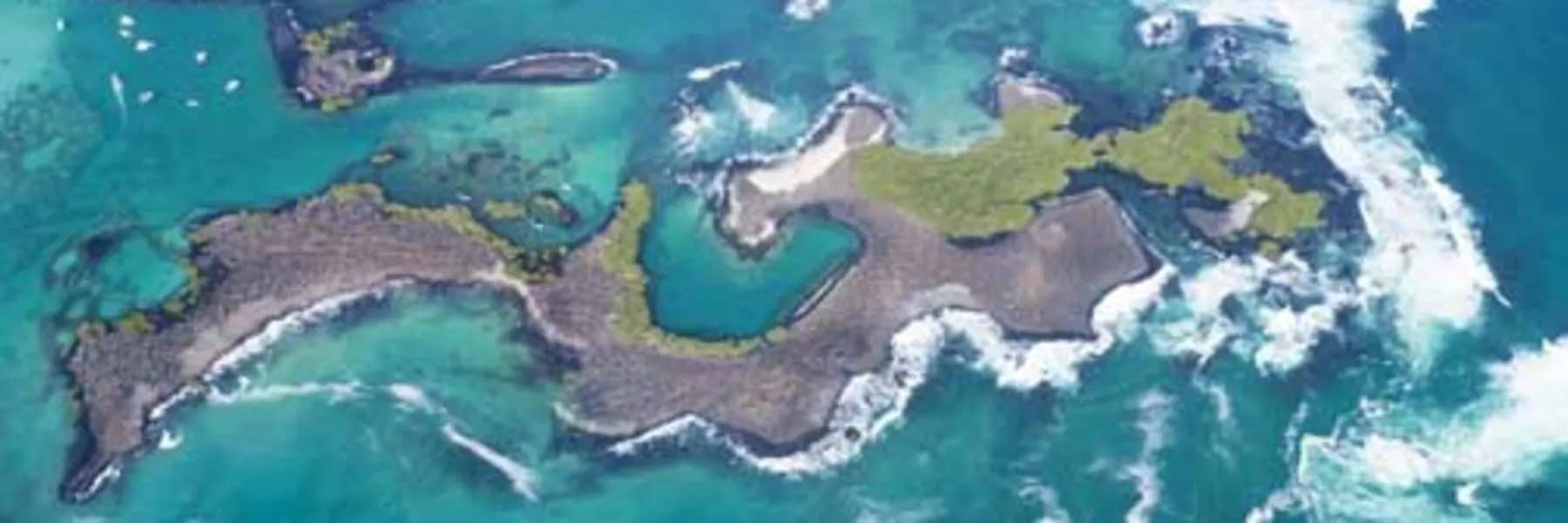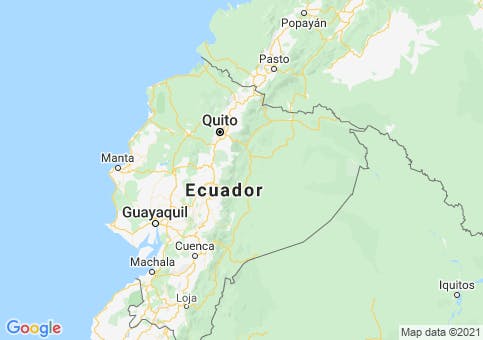by Kathleen Evans
Where are the Galápagos Islands?

The archipelago known as the Galápagos Islands is part of the country of Ecuador on the South American continent. These mystical islands are located in the Pacific Ocean approximately 600 miles (965 kms) west off the coast. The 19 islands straddle the equator to the north and south. They violently emerged from the bottom of the sea during volcanic eruptions between three and 5 million years ago.
What are the Galápagos Islands Famous for?
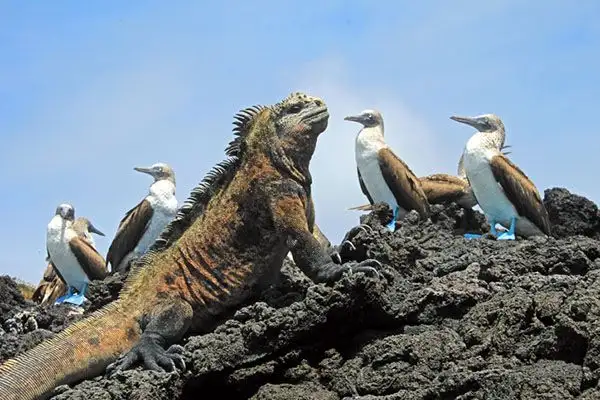
Since this relatively new land began with nothing but volcanic rock, every plant and animal species which migrated there (birds flying with plant life, iguanas and turtles floating on logs, etc.) had to learn to adapt to the harsh environment—lacking in flora and fauna, initially. No place on earth can you see such rare adaptations for survival. So much so that English naturalist and biologist, Charles Darwin, studied his theories of evolution on these islands, calling them a “living laboratory” after his visit in 1835.
To this day his contributions to science, biology, nature, and ecology continue at the Charles Darwin Research Station, which is an active breeding center operated by the Charles Darwin Foundation. No visit to Santa Cruz Island would be complete without a visit to it.
What Types of Animals Live on the Galápagos Islands?
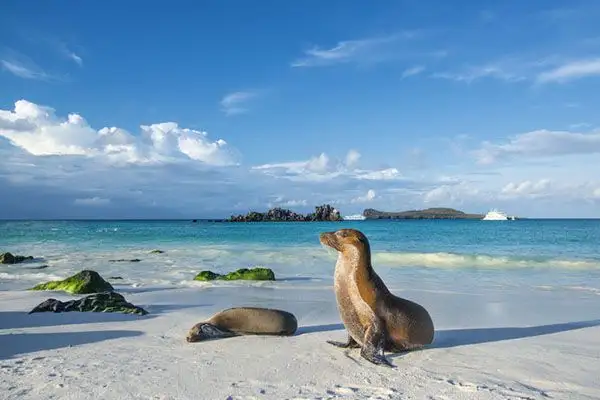
Thanks to a lack of natural predators, wildlife in the Galápagos has no fear of humans, making the islands one of the world’s greatest wonders and a magical naturalist destination to visit.
Many of the animals you will see here do not exist anywhere else in the world.
A short list includes: the Galápagos fur seal, the Galápagos sea lion, eastern red bats, bottlenose dolphins, beaked whales, Galápagos tortoises, Green sea turtles, pink land iguanas, marine iguanas, flamingoes, blue-footed boobys, Darwin’s flinches, flightless cormorant, Galápagos doves, hawks, penguins, frigate birds, ospreys, and more.
What Airlines Fly to the Galápagos Islands?

To reach the islands you take an international flight either to Quito, the capital of Ecuador, or to Guayaquil, both on the mainland. Since you are traveling that far, it is suggested you spend at least a few days on the mainland.
Ecuador is a great country to explore and is welcoming to tourists. Old Town Quito is quite charming with its hilly terrain, colonial architecture, and cobblestone streets.
Plus, just north of the city you can stand on the equator and snap that quintessential tourist shot straddling the north-south line with one foot in each hemisphere.
Both Quito and Guayaquil have daily flights departing to the Galápagos Islands. The flight takes two hours from Quito (typically with a quick stop over in Guayaquil).
There are two major airports in the Galápagos: Seymour Airport (located on Baltra Island) and San Cristóbal Airport (located on the island of the same name). Since there is typically a weight restriction of 44 lbs. or 20 kg for flights to the Galápagos, be sure to bring only what you need to the islands. It is a very casual and natural destination, so you don’t need anything fancy.
Are there Cruises to the Galápagos Islands?
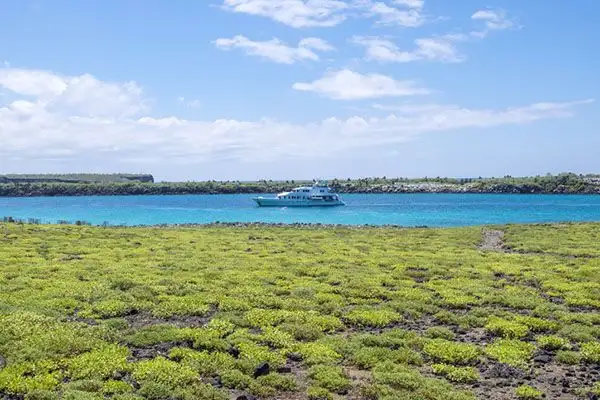
Most visitors to the Galápagos choose to take a cruise around the islands. It is important to double-check from which port your Galápagos cruise is departing, in order to choose the correct arrival airport.
Cruises vary from four to 15 days, but eight days is typically recommended to see a full spectrum of everything the islands have to offer.
There are certain species you can only witness on one or two islands but not the others. Cruise prices vary widely based on length, type of boat (averaging somewhere from eight to 60 passengers—not massive cruise ships) and level of service and food.
Pricing for an eight-day seven-night cruise will typically run from $3,600 to $4.200 per person for a mid-range boat (including all meals, all excursions, a bilingual naturalist guide, snorkeling equipment, and kayaks).
A four-day three-night cruise typically varies from $1,570 to $3,800. If you are flexible with your time and not visiting during high season, you can find discounted cruises as much as 50% or more just days before sailing, if some cabins remain unsold.
Five of the islands are inhabited—San Cristóbal, Santa Cruz, Floreana and Isabela, and Baltra.
On these islands, you can find basic to luxury hotels and rental apartments on Airbnb or VRBO. If you are looking for a discounted cruise, book a few nights on the ground and then check at the tour desks or at the boat docks in Puerto Ayora, Santa Cruz or Puerto Baquerizo Moreno, San Cristóbal.
Hotels and hostel rates are typically between $40 to $315 per night, based on double occupancy. Many include breakfast. Even if you don’t take a cruise, there are several day-trip boats which can take you to various islands.
What Currency is Used in the Galápagos Islands?
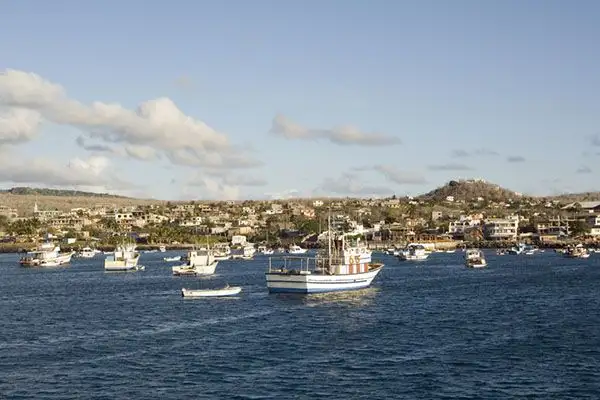
Everything on the islands has to be imported by air or sea from the mainland, so prices will reflect that. The official currency of Ecuador is the U.S. Dollar and their power plugs and sockets are the same as North and Central America at 120 volts.
Keep in mind that only a few of the larger hotels and touring companies can process credit cards. For the most part, you will need to pay in cash everywhere during your visit. Even if your reservation was made using a credit card, your hotel may still require payment in cash.
Get Your Free Ecuador Report Here
Get Your Free Ecuador Report Here
Learn more about Ecuador and other countries in our daily postcard e-letter. Simply enter your email address below and we'll send you a FREE REPORT - Ecuador: Live Like Royalty on Your Social Security.

By submitting your email address, you will receive a free subscription to IL Postcards and special offers from International Living and our affiliates. You can unsubscribe at any time, and we encourage you to read more about our Privacy Policy.
Do you need Vaccinations or a Visa Before You Travel to the Galápagos?
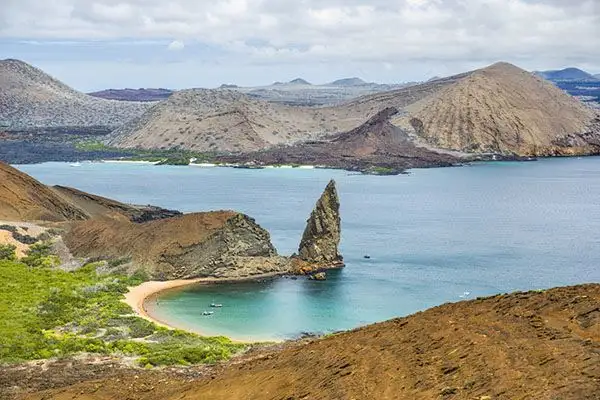
"From most countries (including North America, South America, Europe, Asia, and Australia) you do not need to obtain a visa prior to entering Ecuador. All you need is proof of a round trip ticket (return within 90 days) and a passport with at least six months’ validity. For your trip to the Galápagos, you must purchase a special two-part Entry Permit at the airport for $20 (cash) per person. Keep this with you, because you will need it when you enter and leave the Islands."
If you are only visiting the Galápagos Islands and Quito, you are not required to have any vaccinations. If, however, you intend to visit the Amazon or coastal regions, it is recommended to check with your travel clinic or healthcare professional.
They may suggest typhoid, hepatitis A, diphtheria, and yellow fever. Plan ahead of time since some vaccinations need to be given several months prior to your trip. If you enjoy exotic travel, it is always a good idea to be updated on your travel vaccinations anyway.
It is advised to purchase a travel insurance policy that includes trip cancelations, baggage, medical protection, and medivac, just in case you run into any unforeseen travel issues or accidents.
Medical facilities on the islands are limited, so you will need to be evacuated to the mainland for major medical emergencies. It is suggested you buy purified water and not drink directly from the tap.
What is the Best Time of Year to go to the Galápagos Islands?
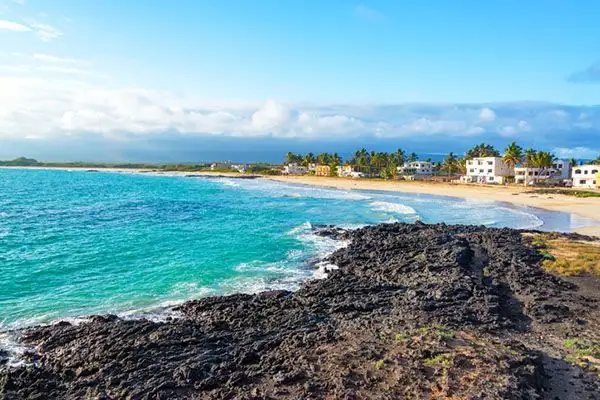
The islands have two seasons: cool and dry (June to November) and warm and wet (December to May) with warmer season being the better time to visit for calmer seas and clearer under water visibility. Showers during wet season tend to be brief, so that is not a huge factor. Temperatures remain fairly moderate throughout the year, ranging from 69 F to 84°F.
Unlike most other wildlife destinations, the animals in the Galápagos can be seen all year—they are not migratory. Therefore, there is never a “bad” time to visit. However, if there is something specific you wish to see (like sea turtles laying their eggs or tortoises hatching), be sure to check the typical annual schedule for specific behaviors.
Are the Galápagos Islands Safe for Tourists?
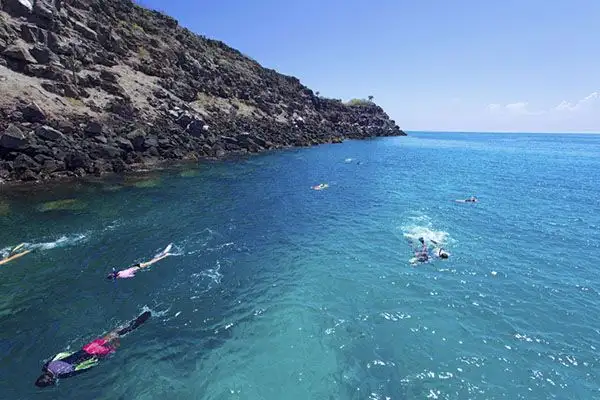
Travel to the Galápagos Islands is considered very safe for tourists. No countries have issued any warnings except exercising the same caution you would anywhere at home. Petty crime happens on the mainland, but is rare on the islands. You should be more aware of risks not associated with crime. For example, the sun is extremely strong at the equator all year, even on cloudy days. You should wear sunscreen and sun protective clothing, especially on the decks of the boat or when hiking on the islands.
Although the animals have no fear of humans, one must be respectful to them and be aware of sharks and male sea lions. Listen to your guides and never touch or antagonize the wildlife. Water safety should always be top of mind for swimming, snorkeling, and diving. It is also good to stay hydrated and avoid too much alcohol consumption. The islands don’t have mosquitoes or biting insects.
What is the Ecosystem of the Galápagos Islands?
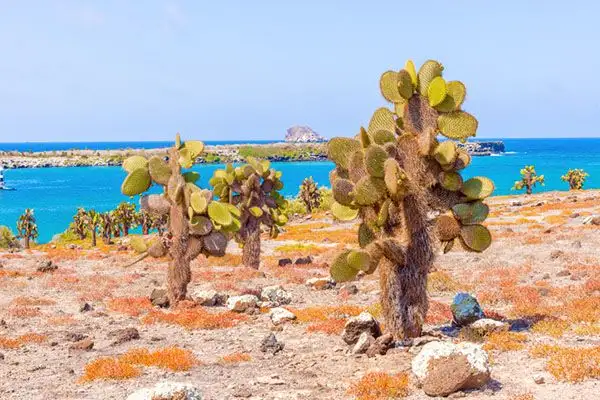
The Galápagos Islands are a protected national park and a UNESCO World Heritage Site. There are threats to the delicate ecosystem and species there from tourism, overfishing, climate change, and typical phenomenon that impact the entire world. However, the government, conservationists, and residents are vigilant about keeping a small footprint on the environment there.
The park service ensures that tourism is managed in the best way possible, it regulates guides, designates low-impact landing sites, and charges a $100 National Park Fee for foreign visitors. Ecuadorians and expats with residency visas pay only $6 ($3 if 65 or over). It is also important to note that they do not accept credit cards, fees must be paid in cash.
The number of boats and tourists are limited in numbers per day and only 3% of the island’s landmass is allowed to be populated. The islands also use renewable energy and have an enviable recycling program. You can help when visiting by abiding by a list of reasonable rules, including:
Do not remove any elements from the ecosystem. (e.g. plants, animals, shells, etc.)
Do not bring any live material to the islands, or from island to island.
Maintain a safe distance from wildlife and never feed them, as this can cause health problems.
Stay within the permitted areas and only visit the islands with a licensed National Park guide.
Do not leave trash anywhere on the islands or throw any off your boat.
Do not vandalize or deface rocks.
Do not use flash photography.
If you are ready for a once-in-a-lifetime journey to a mystical world before humans existed, the Galápagos Islands will not disappoint.
Galápagos on a Budget? It Helps if you are a Resident
By Jim Santos
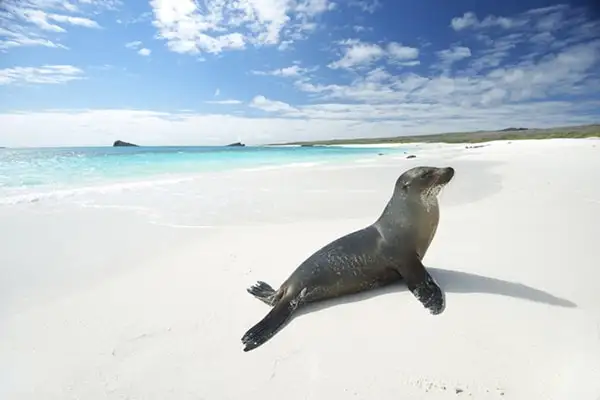
For many people around the world, a visit to the Galápagos Islands is a common “bucket list” destination. Unfortunately, visiting this unique but out-of-the-way spot can be a very expensive proposition. For example, a family of four visiting from North America may find that between airfare to Ecuador and then on to the Islands, entry fees, accommodations, tours, meals, etc., that the cost of a Galápagos trip can easily approach or even reach five figures, forcing it to remain a dream for many.
This is one of those cases where being an expat in Ecuador gives you a definite advantage. If you are a cedula-bearing resident, you can significantly cut your costs and enjoy a rewarding visit to these famous tiny islands that have had such a tremendous impact on science and our understanding of the world around us—without breaking the bank.
Advantages of Residency
The first advantage is huge and should be obvious right off the bat: you are already in Ecuador. This eliminates the cost of international air travel and all of the associated expenses like paying for parking your car back home, hotels for late-night arrivals or early morning departures, and so on. The only flights you need to book are domestic runs to the Islands from Quito or Guayaquil. Even if you are not close to either airport, travel within Ecuador by bus, car, or hopper flight is very affordable. Roundtrip tickets to the Galápagos, depending on the time of the year and how early you make your reservations, will cost around $400 per person.
If you are a resident and 65 or over, you can make your reservations through a travel agent or at the airline’s business office and get a 50% discount on the price of the ticket. Note that this is only the ticket price—you will have to pay the full charges for airport fees, fuel tax, and other fees—but it is still a substantial savings.
While we are on the subject of airline reservations, here’s another tip for saving money. There are two airports in the Galápagos that handle flights to and from the mainland; one is Aeropuerto Seymour on Isla Baltra, which connects by ferry to Isla Santa Rosa, and Aeropuerto de San Cristóbal on Isla San Cristóbal. These are the two most populated and popular islands, as Santa Cruz is the home of the Darwin Research Center, and San Cristóbal hosts the Interpretation Center.
You can reduce the costs of getting from island to island on your visit by flying into one airport and out the other. The airlines charge identical rates whether you use the same airport or both, so this means you don’t have to waste money backtracking to an island you have already explored just to catch a flight.
Everyone (except of course those who live in the Galápagos) must pay a $20 per person fee at the Quito or Guayaquil airports to acquire an Entry Visa to the Islands, even residents of the Ecuador mainland. This is a two-part card, which is stamped when you arrive and then one side detached when you exit—so it is important not to lose that.
However, as a resident you will see tremendous savings when you arrive in the Galápagos. At the island airport when you show your Entry Visa, there is a $100 per person National Park fee. This (and the earlier Entry Visa) must be paid for in cash—credit cards are not accepted. But if you can show a cedula (national ID card) indicating you are an Ecuadorian resident this fee drops all the way to $6. Even better, if you are 65 or over, you pay only a $3 fee.
Your cedula can continue to save you money on the islands. For example, some of the tour companies offer discounts to residents, especially on “last minute” fares. Emetebe Airlines, which offers intra-island flights between Islas San Isidro, Baltra, and San Cristóbal, also discounts their rates when reserved using a cedula number for identification.
There are some other ways to save money in the Galápagos and still have a great and full experience. You can book some very nice accommodations in advance via online resources like Expedia and Booking.com at hotels and hostels for as little as $40 per night, most of which include WiFi and breakfast. You will find meals to be a little pricey at many restaurants, especially those connected to hotels or along the beaches. But if you look to see where the locals are eating, or explore a block or two off the beach, you can find meals more in line with typical Ecuadorian prices.
For example, a lunch at the more touristy venues may cost $15 dollar each or more. But we found smaller restaurants offering almuerzos that included a seafood soup, salad, rice, grilled fish, and a juice drink for just $5 each. I should point out that every meal we had during our visit to the Galápagos was delicious, and we certainly did not feel cheated even on the most expensive of dining options (you have to try the lobster), but you can certainly shave some dollars off your total package and enjoy great food.
Of course, the biggest expense once you are in the Galápagos is in taking boat tours around the island or off to the unpopulated ones, dive tours, snorkeling expeditions, and guided inland tours. If you are a diving enthusiast, of course you want to take advantage of this wonderful opportunity. But if like my wife, Rita, and me, you are mostly interested in hiking and exploring, seeing some seals, tortoises, boobies, and the other unusual animals that got Darwin thinking almost 200 years ago, you can do all of that by visiting just two or three islands and setting off on your own.
Everyone has different ideas of the perfect Galápagos vacation, and there is no right way or wrong way to do it. You can take a boat tour, where you live onboard and travel to a new island overnight so as to visit as many as possible; you can stay on just one island, and take day trips to others; you can spend some time on some or each of the four populated islands; or some combination of all three.
We chose to fly into Baltra and spend four nights on Santa Cruz, then take the Emetebe flight to San Cristóbal for another four nights before returning to Guayaquil.
Here is a short video giving you an idea of some of the things you can see and do with such a simple (and affordable) trip to one of the most incredible destinations in the world, the Galápagos Islands.
Video Tour of the Galapagos Islands
https://www.youtube.com/watch?v=vjhToh-WmdA
Get Your Free Ecuador Report Here
Get Your Free Ecuador Report Here
Learn more about Ecuador and other countries in our daily postcard e-letter. Simply enter your email address below and we'll send you a FREE REPORT - Ecuador: Live Like Royalty on Your Social Security.

By submitting your email address, you will receive a free subscription to IL Postcards and special offers from International Living and our affiliates. You can unsubscribe at any time, and we encourage you to read more about our Privacy Policy.
